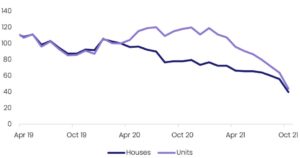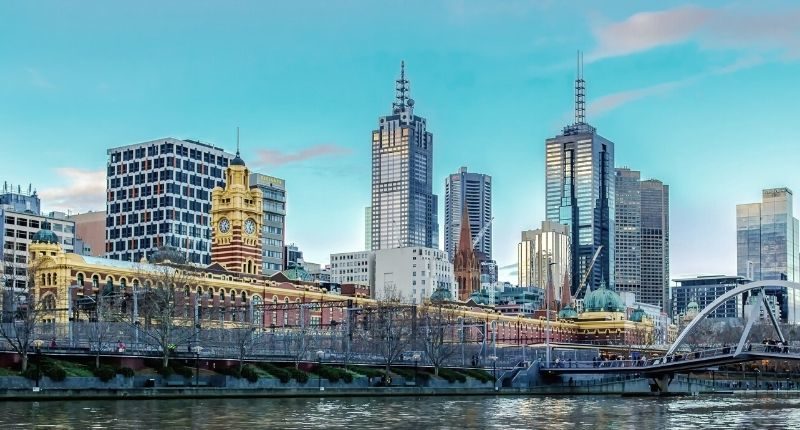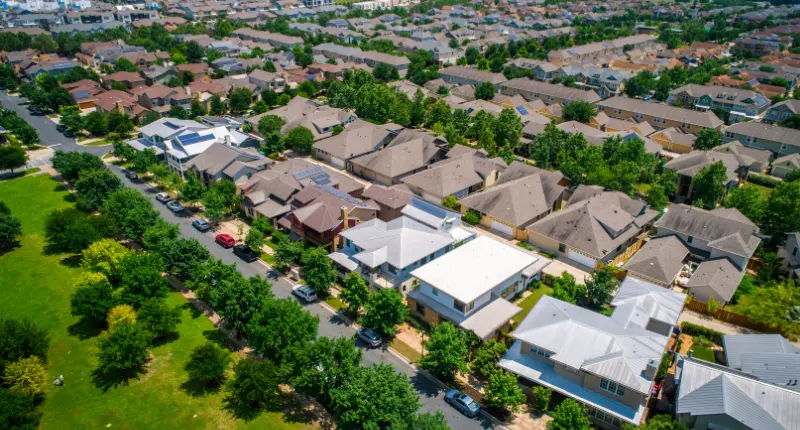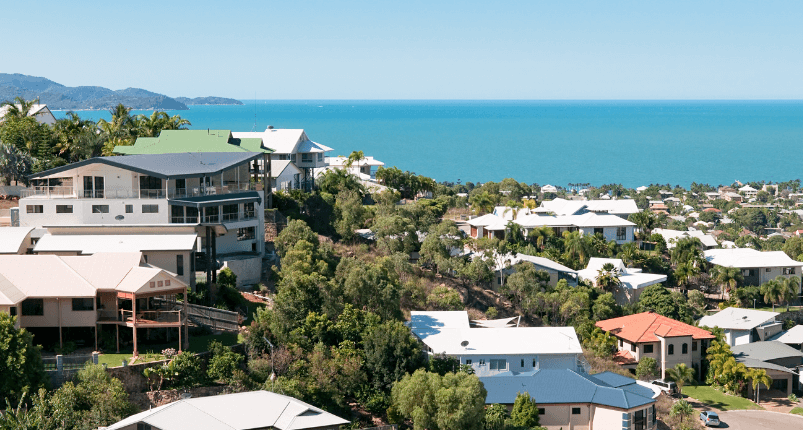- All top 20 largest rental rate falls recorded in Melbourne
- Gap between house and unit rental rates persist as demand and supply shifts
- National stock levels of houses and units continue on downwards trend
While national rental rates may be rising at their fastest since 2008, Melburnian landlords were left out of luck according to the latest CoreLogic data.
All 20 suburbs in CoreLogic’s list of top 20 largest rent falls nationally between March 2020 and October 2021 are located in Melbourne.
Melbourne rental rates plummeted
Inner Melbourne was hit hardest comprising 18 of the list, the largest decline seen in Melbourne itself at an enormous 22.4%.
This was closely followed by Carlton and Southbank, falling 18.4% and 18.3% respectively.
The remaining two areas were Caulfield (Inner South Melbourne) and Clayton (South East Melbourne), though on the lower end of the list at -8.6% and -8.5% respectively.
Top 20: Largest fall in rents, March 2020 to October 2021 (by SA2 region nationally)

Melbourne
SQM Research supports CoreLogic data, also showing that since the pandemic began, asking rents have declined.
The news isn’t all bad, however, with rents in inner city areas rising across Australia, including a 2.4% increase in Melbourne over the three months ending October and a 1.1% annual increase.
Easing restrictions and an eventual reopening of international borders is expected to revitalise the CBD area, however, and inner city rental demand should continue trending upwards.
Gap narrowing between houses and units
Nationally, the gap between the price growth in unit and house rental rates has persisted. Unit prices continue to grow steadier than houses, though are beginning to catch up.
House values have risen 24.2% over the course of the year, more than double the 11.8% growth in units.
Contributing to this growth pattern is a shift in demand away from higher density dwellings towards lower density houses, driven by the pandemic.
Units have also been in oversupply due to the market being inundated with new builds, as construction activity has been heavily concentrated in the high-rise sector, particularly in inner-city Sydney and Melbourne.
Demand for unit rentals is beginning to recover though, as affordability draws renters back to high density spaces.
Annual change in rents, combined capitals

Unit and house rental stock levels shrinking
Both unit and house rental listings are currently trending downwards. Between March and November 2020, units on the market increased 20% while rental rates fell 5.4%, whereas house rentals on the market fell by 20% and rental rates rose by 1.1%.
The 20% increase in unit rental stock was mainly powered by a surge in inner city unit rentals, which rose 49% between March and October 2020.
Monthly number of rental listings, combined capital cities

In contrast, capital city metro rentals declined 16% as demand shifted in favour of suburban rentals.
As for inner city units, by October this year stock levels declined 55% since pre-Covid and 68% since January.
Melbourne saw the largest reduction in inner city unit rental stock, driven by interruptions to normal migration patterns and an influx of newly constructed units.
SQM Research highlights this level of decline, with weekly rental listings declining significantly since the start of 2021.
Melbourne








